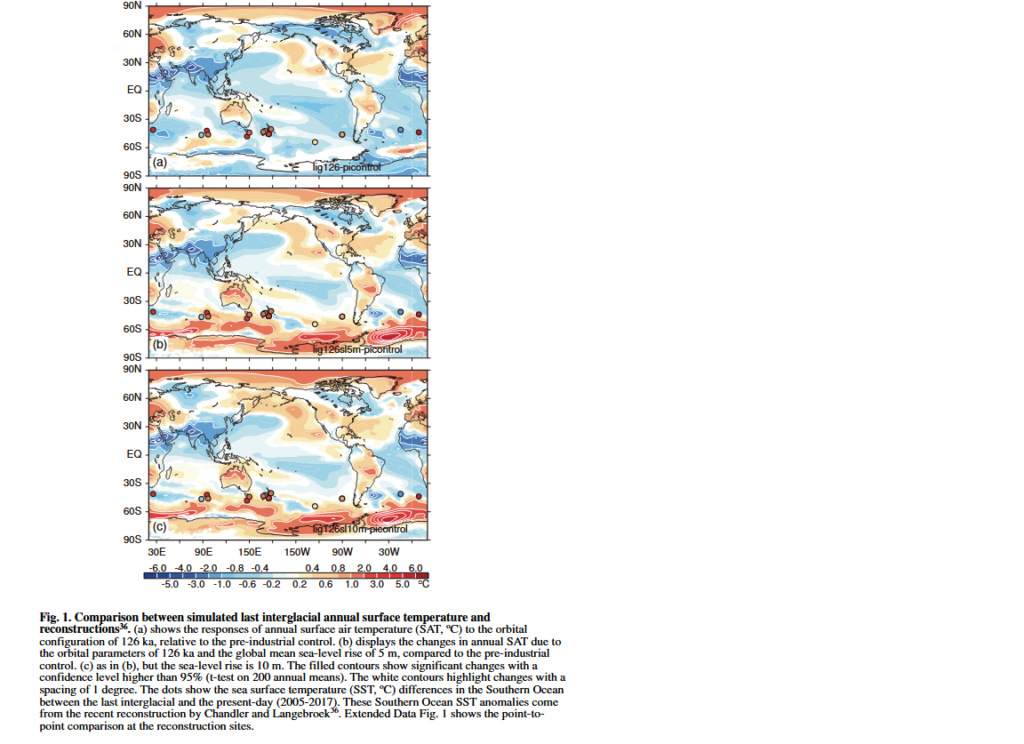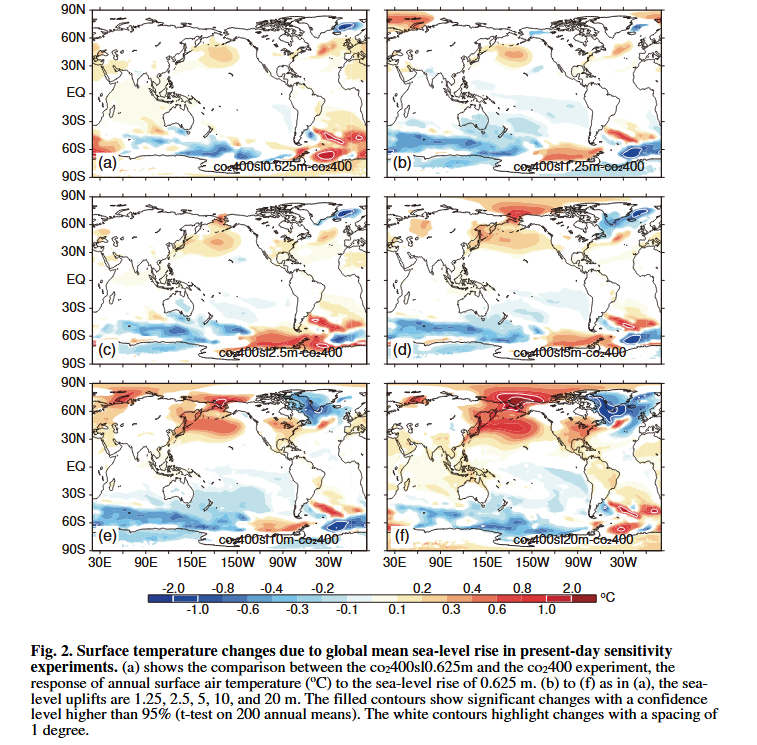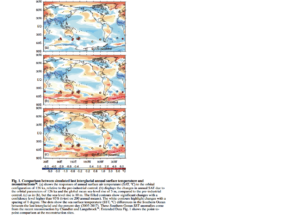by Gilles Ramstein
Paper: https://www.nature.com/articles/s41561-023-01153-y
As the recently released synthesis of the 6th IPCC Assessment Report shows, sea level rise is already underway. Since the beginning of the 20th century, global sea level has risen by about 20 cm (with an increase of 1.2°C for the global temperature) and it could reach 1m by the end of the century. But how could the rise in sea level impact the evolution of the climate through its interactions with the atmosphere and the ocean?
To find out, an international team of climatologists explored the last interglacial (LIG), which occurred between 130,000 and 115,000 years before our era and which is the last warm period that the Earth experienced. This period has the specificity of being similar to our current time, but with a higher sea level (5 to 10 meters), which is associated with reduced Greenland and West Antarctic ice caps.
Using international models, the researchers carried out original simulations to estimate the impact of a rise in sea level of 5 and 10m on the climate for the last interglacial period and a series of similar experiments with a sea level rise ranging from 0.625 to i 20 mete r for the current period.
For the LIG, they showed that taking this single factor into account resolved a paradox. Indeed, for decades, all models have underestimated the variation in surface temperature of the southern hemisphere compared to that reconstructed by both marine and continental data. Taking into account higher sea level rise, they found a better adequation with data. In fact, in response to the rise in sea level, the westerly winds in the southern hemisphere decrease, which profoundly modifies the ocean circulation of the southern hemisphere and enable an increased transfer of heat from the equator towards the South Pole and thus explains its warming.

Thanks to this same model, the team of researchers was able to estimate the climate impact of a rise of 0.625, 1.25, 2.5, 5, 10 and 20m in sea level in the current context and with a pCO2 concentration of 400 ppm. They were able to determine possible projections of the impact of sea level rise. First, at the global level, unlike the previous interglacial, sea level rise would lead to a strong depression over Antarctica, which would increase surface westerly winds in the southern hemisphere and lead to a drop in temperatures. On the other hand, as for the LIG, the AMOC (meridian current of reversal of the North Atlantic) should decrease due to the changes of water flow between the Pacific and the Arctic due to the deepening of the Bering Strait. If sea level rise exceeds 5m, more water of Pacific origin enters the Labrador Sea, thus lowering the salinity, which, ultimately, would greatly reduce the AMOC. At the regional level, this would result in warming of the North Pacific and cooling of the Southern Hemisphere, even with limited sea level rise. These results show that the rise in sea level has a significant effect on temperatures that it is crucial to take into account.
This is all the more important since we know, thanks to the spectacular improvement in global and local sea level rise measurements, that there is currently an important acceleration in sea level rise. The values which, until 1993, were of the order of 1.5mm/year, have already doubled and will continue to increase with the inevitable partial melting of the ice caps which will become, by far, the main contributor to the increasing volume of the world ocean.
In this context, the results of this study are particularly important because they mean that this accelerated sea-level rise could have an even greater effect on the climate than anticipated. There are of course limitations to this study. First, using global sea level is a simplification, as there is a certain spatial variability. Other limitations include the spatial resolution of these global simulations, the fact that only one model was used and the inability to take into account the freshwater fluxes associated with the ice caps. But these results are very encouraging and highlight the importance of studying the impact of the acceleration of the current sea level rise on the future climate.


